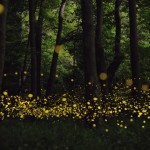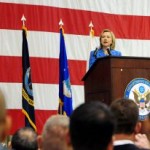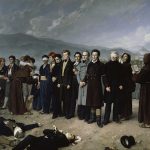Nature´s Metropolis
A book by William Cronon

Nature’s metropolis : Chicago and the Great West
William Cronon’s Nature’s Metropolis is a history of Chicago. A city that emerged in the northern Midwest against considerable odds; but nevertheless achieved in a very short period of time a position of dominance in trade, in particular for lumber and agricultural products. Chicago revolutionized forever the way marketplaces (i.e. stock exchanges) worked. Later it also became a hub for the revolution in transportation and communication that marked the explosive industrial development of the 19th century. Chicago is a city created around a commercial idea, not out of any settlers’ necessity or government expansion project to the frontier land. It is a quintessential American city, as described by Whitman: “They shall fully enjoy materialism and the sight of products, they shall enjoy the sight of the beef, lumber, bread-stuffs, of Chicago the great city.”
The most interesting idea in Nature’s Metropolis is that Chicago as a city existed not only in geographical terms, but also as an abstraction of its “first nature” and its hinterland. Cronon calls this abstraction Chicago’s “second nature,” which is a kind of artificial world created by human agency. The similarity that he finds to the Thünen Model is interesting in the sense that the closer to the urban center, the stronger the abstraction becomes. The second nature influences the first and changes it. Those abstractions are of different kinds. In my view there is no single “second nature” but several layers of abstraction.
One abstraction is the transformation of corn into a commodity. This is achieved by the use of several technologies. The first is the fusion of the actual shipments of corn into a stream of produce, creating a constant flow of material. The second one is standardization, making the grain interchangeable and independent of origin and producer. The third one are the new methods that make the commodity tradable independent of its actual physical existence. A trader was able to buy and sell without ever taking possession of the actual grain, a transaction solely in the form of elevator slips and futures. Those technologies combined accomplished a system of abstraction for the grain that represents a “virtual landscape”, where grain flows and can be accumulated and exchanged as financial and commercial instruments. Thus, every layer of abstraction has a specific function for the working of the system.
As a result Chicago existed as a city as well as a node of grain flows and financial flows. The node in the network is only a representation of the real Chicago, created by a combination of technology and social and market practices. The virtual world of the grain trade in Chicago existed regardless if the actual grain was on hand. This separation caused various irregularities in the market like corners and non-convertible paper. Something similar happened with pork, lumber and the retail trade. All of them model some part of the real Chicago and its role in the American economy. Chicago became a system of related abstract places. Remember this was the 19th century: when you bought something the actual good was delivered from the producer to your storage facility.
Many of the worlds we live in today are an abstraction of the real world made possible by technology. One thinks of the simulacra created by the mass media, as expressed by Baudrillard in his statement that “the Gulf War did not take place.” Or the financial devices created by derivatives and instruments to repackage debt, that in the end gave form to a market that was in large part an unreal world with many degrees of separation and uncertainty.
More interesting are the parallels that can be established between the Chicago that Cronon describes and the worlds within the Internet, created by the use technology and social imagination: the places that we call, somewhat clumsily, Virtual Worlds. For example Second Life contains an abstraction of the world with its own economic system, currency, inhabitants, places, and the possibility to design and re-create the environment. Social Production Networks (like Wikipedia) have created an online abstraction of a Common Property Regime that is sometimes called a “New Commons.” Within the New Commons real persons assume parallel identities, perform work, own and use the common property and develop different kinds of social capital, tradable and non-tradable. They are a property regime in the world of online networks. A similar Thünen Model emerges when the maps of links of the Blogosphere or of the Internet are examined. Very small sites link-up to larger ones, and several big “metropolis” of the Internet exist, where many converge and feed from.





